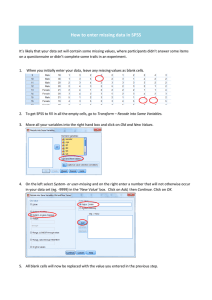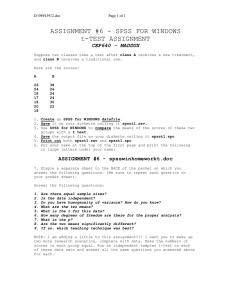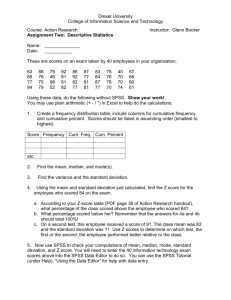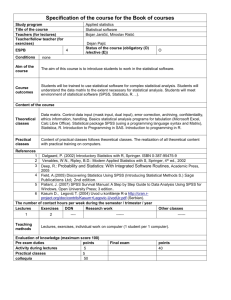Using SPSS to Obtain a Binomial Probability
advertisement
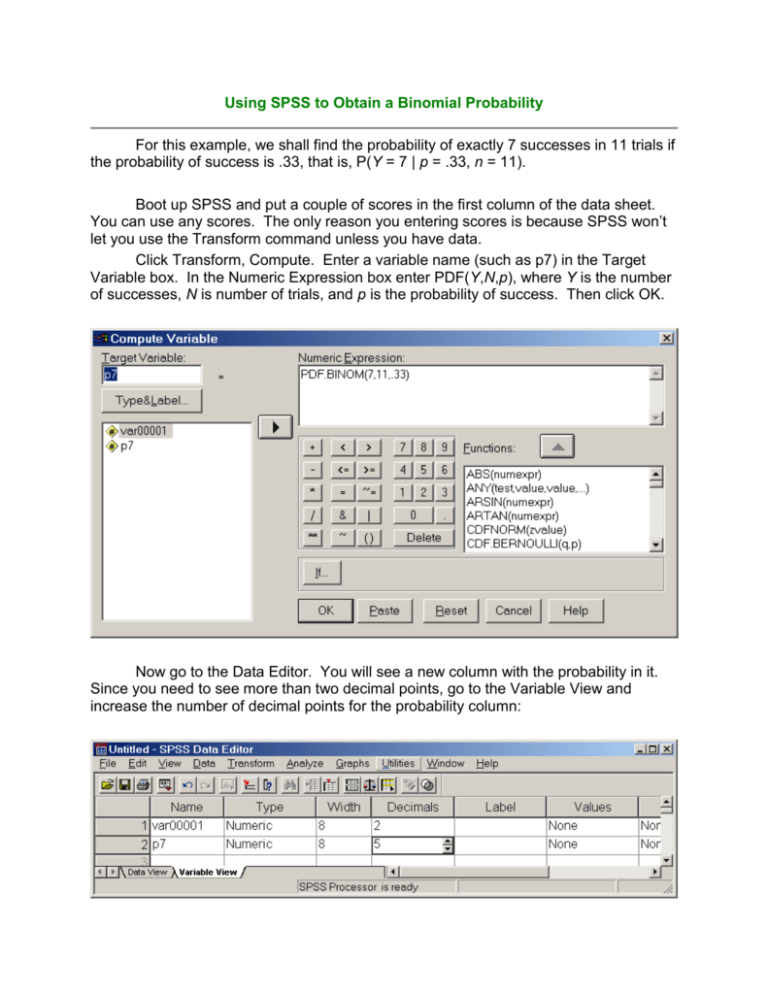
Using SPSS to Obtain a Binomial Probability For this example, we shall find the probability of exactly 7 successes in 11 trials if the probability of success is .33, that is, P(Y = 7 | p = .33, n = 11). Boot up SPSS and put a couple of scores in the first column of the data sheet. You can use any scores. The only reason you entering scores is because SPSS won’t let you use the Transform command unless you have data. Click Transform, Compute. Enter a variable name (such as p7) in the Target Variable box. In the Numeric Expression box enter PDF(Y,N,p), where Y is the number of successes, N is number of trials, and p is the probability of success. Then click OK. Now go to the Data Editor. You will see a new column with the probability in it. Since you need to see more than two decimal points, go to the Variable View and increase the number of decimal points for the probability column: Go back to the data view and see the computed probability, .02834 in this case. You are more likely to want a cumulative binomial probability. Suppose you want to find P(Y 2 | p = .33, n = 11). Use the CDF.BINOM function, as illustrated below: Karl L. Wuensch Dept. of Psychology East Carolina University Return to My SPSS Lessons Page
